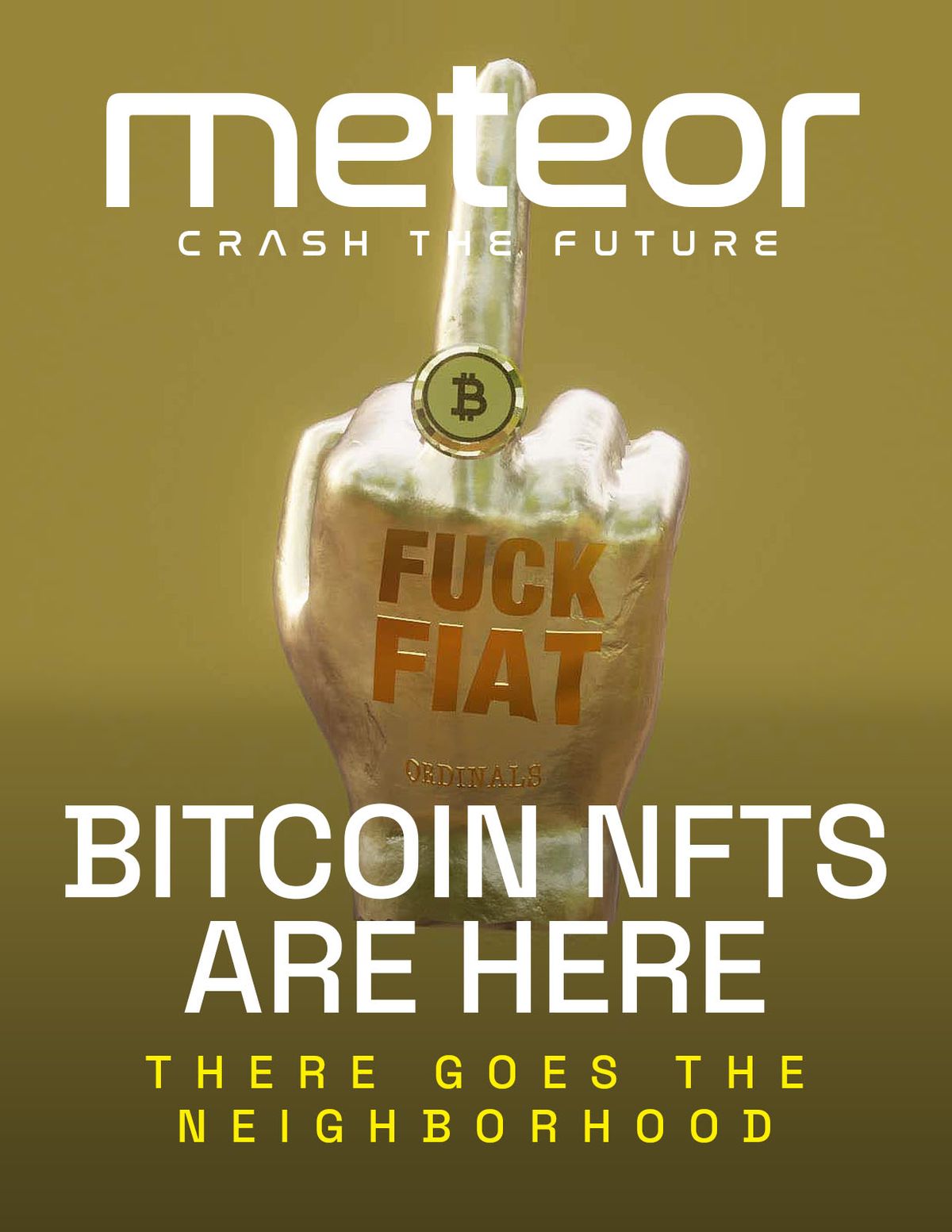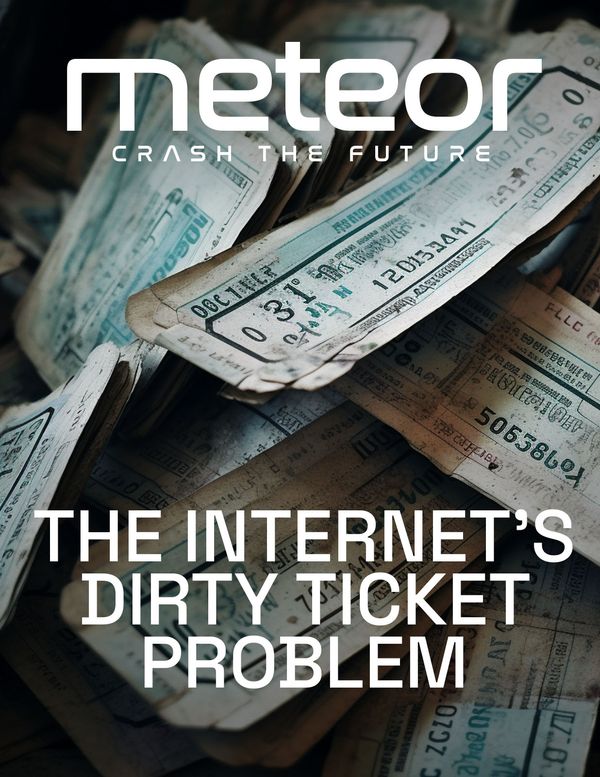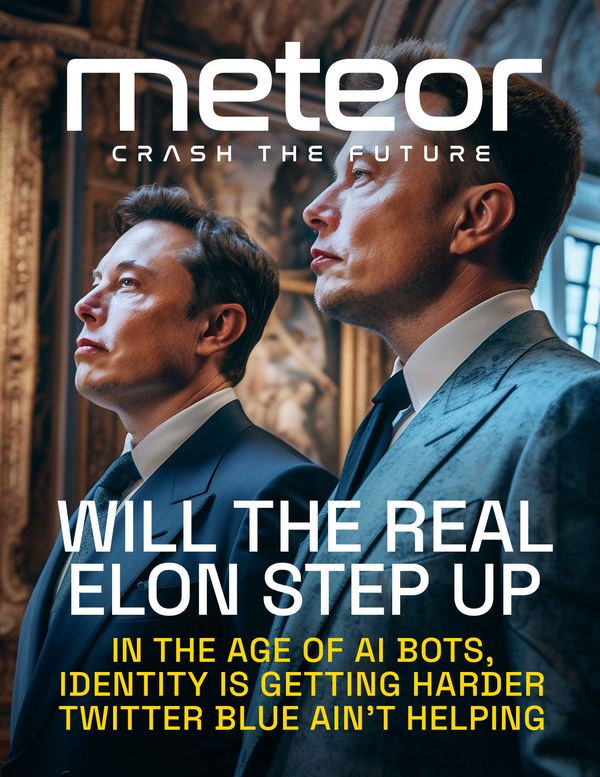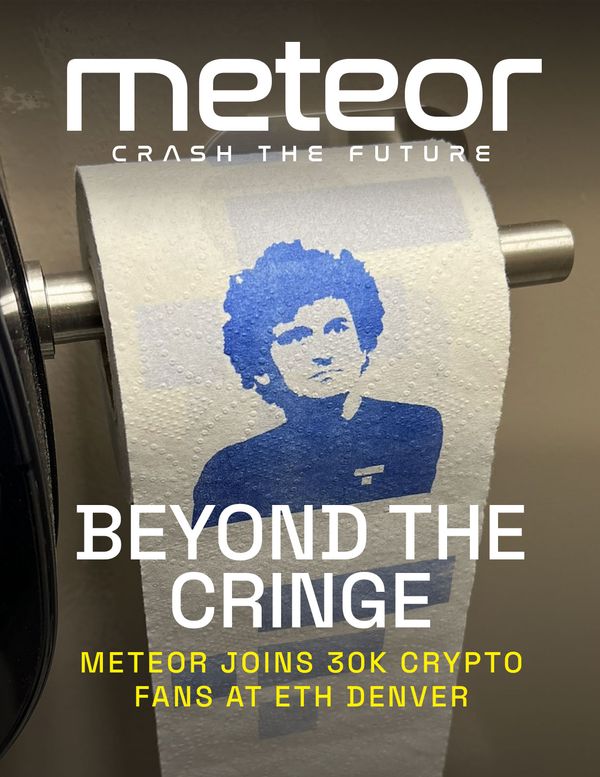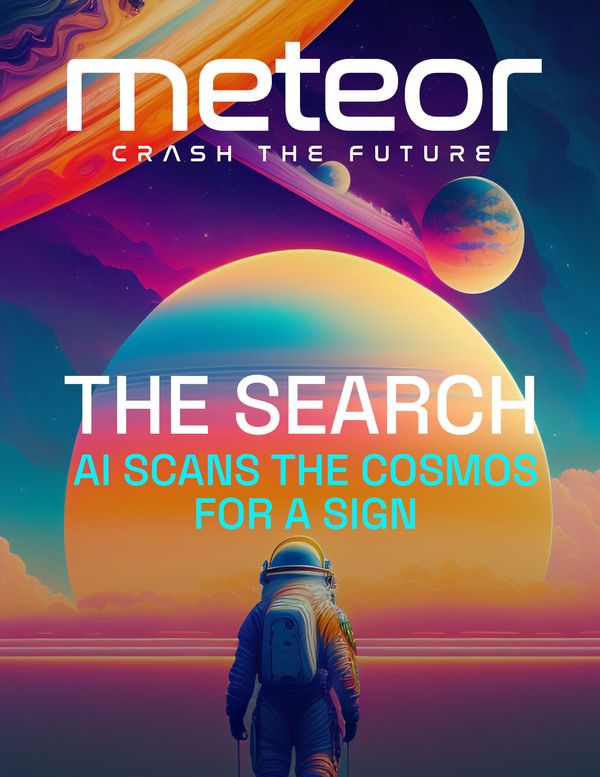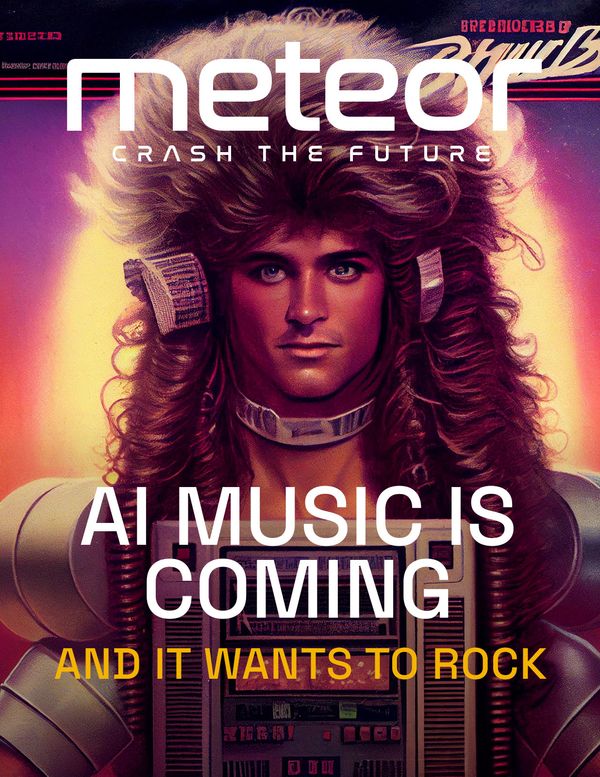Inside Today's Meteor
- Create: The endless Seinfeld parody made with AI
- Think: Bitcoin NIMBYs hate new on-chain NFTs
- Compress: The FBI have a Bored Ape now
- Disrupt: Nuclear rocket could be fast track to Mars
Create

"Nothing, Forever" is an endless Seinfeld parody created by AI
Creators Skyler Hartle and Brian Habersberger used OpenAI's Davinci GPT-3 model to generate the script. Microsoft Azure Cognitive Services speech API creates the characters' voices, and the Unity game engine handles the visuals. It's been running almost continuously with fresh material every few minutes since December on Twitch , complete with a laugh track, pedestrian scenarios (where should we eat today?) and a stand up routine to close each "episode." Listening is more fun than watching.
the AI generated endless seinfeld is kinda starting to get the hang of it pic.twitter.com/odv8qalav4
— jocelyn romo (@theeroamer) February 2, 2023
Watch Nothing Forever on Twitch.
Think

Get off our blockchain!
tl;dr
- NFTs can now be minted on Bitcoin via a breakthrough called Ordinal Theory
- It's controversial. Many Bitcoin purists believe the blockchain should be used only for currency.
- NFTs could greatly slow down the network and might lead to child porn or other terrible things being minted without controls.
- But in just days, there's been huge excitement and thousands of NFTs minted to the chain. It's likely here to stay.
The JPEGs have come to Bitcoin’s block(s) and rather than indulge in all the inane and immutable memery that's been unleashed, many in the original blockchain community are engaging instead in good old fashioned NIMBYism.
If you haven’t heard, Bitcoin now has NFTs. Honest-to-God, permanent, transferrable JPEGs, GIFs, even audio files and a playable Doom video game inscribed directly on the ledger.
Since January 21, when developer Casey Rodarmor launched a project called Ordinals and its first application, "Inscriptions," hundreds of random digital assets have for the first time been created and stored in verified Bitcoin blocks, which you can peruse on this nifty explorer.
It's weird, it's fun, it's a big deal. It's also pissed a lot of people off.
What's going on?
Most NFTs are currently minted on Ethereum, Bitcoin's chief rival. But they often come with a price: Many Ethereum and derivative ETH chain projects merely point to an image on a server somewhere that can be deleted or changed, and some people deride them for what they regard as buggy code that's bound to self destruct and collapse into bit rot. Check in 100 years and you'll find nothing there.

By contrast, Inscriptions are stored fully on the world's most resilient chain and are immutable as long as a Bitcoin node is running somewhere, and that's presumably going to be for a very long time. This is a big upgrade in terms of durability, given Bitcoin's security and decentralization, if not its energy profile.
Second, having missed the NFT boat until now (previous 'Bitcoin NFTs' exist but were never really stored on chain) Bitcoin node operators have the chance to pocket some of the lucrative minting fees Ethereum has racked up for years, and capture cultural bragging rights, or notoriety, that come with celebrity art projects like Beeple's "Everydays – The First 5000 Days," which sold at auction for $69 million.
With all that goodness you might have thought every Bitcoiner would be full-time trolling every ETH wallet holder who has ever sniffed one. Bitcoin NFTs are finally here and they are the real deal! Let's GOOOO!
Instead, it’s incited a fierce backlash.
Naysayers loudly blame Inscriptions for flouting Bitcoin's ethos, and driving network congestion and higher transaction costs. Bitcoin developer Adam Back has called it “sheer waste and stupidity” while others say the new protocol “is a DOS attack on Bitcoin nodes and it would be good to have a mitigating softfork” that would attempt to close the loophole forevermore.
Some of the resistance stems from a stubborn idea: that Bitcoin is and should be nothing more than a decentralized digital currency, dedicated to facilitating financial transactions while avoiding regulatory or any other kind of capture, and nothing else. Debates about whether Bitcoin should evolve to support general data storage, which would have opened the door to NFTs among other things, were litigated long ago and thought to be closed.
Now that question has been blown wide open all over again.
Another reason for the anger: Unlike previous attempts to expand Bitcoin's utility, which required code changes and community approval, Inscriptions run on Bitcoin as is. This time no one needed to ask permission (permission-less!), they just showed up.
Finally, there are concerns that allowing anyone to add arbitrary data permanently to the Bitcoin ledger could open it up to attacks that go beyond mere nuisances like block bloat and transaction costs.
While there have been myths about Bitcoin hosting child sex exploitation (CSE) material based on a misunderstanding of Bitcoin's data features in the past, this time it could become real. Would hosting classified secrets make Bitcoin a kind of illegal Wikileaks locker targeted by governments worldwide? Since most nodes host a complete copy of the blockchain, some worry Inscriptions could wind up criminalizing Bitcoin if they aren't stopped.
There have already been some problems.
At least one “Goatse” has been inscribed to Bitcoin. Forever. Ordinals Godfather Rodarmor blocked the image from appearing on his Inscriptions explorer, but it’s still there in the block for as long as the network runs. (You can find the image, but maybe trust us you don’t want to.)

A vote would be required to chase new Inscriptions off the lawn, something that's being actively discussed, although other avenues, such as block pruning, might fix the illegal content problem well enough to protect most node operators without throwing the baby out with the bathwater.
Simple economics could also put a brake on frivolous NFTs, by raising the price on mining the bits of data that are inscribed. Since miners get paid primarily for transactions, and data packets until now have typically been tiny, Bitcoin data costs are not priced for a market where large files are mined routinely. Which may partly explain the flurry of NFT activity at the moment. It's cheap.
A marketing campaign recently pushed through a 4MB block, the largest possible as well as the largest in history, consisting of a single transaction, and it was an advertisement. At recent rates the data might have cost as little as 0.4 BTC, or about $12,000, although an off chain bounty was also likely paid to the miner. Considering the Bitcoin blockchain has grown at an average rate of about 50MB a year since genesis you can see why this might end badly.
Raising prices could be the simplest way to keep out the riffraff while making Bitcoin an ideal place to mint super rare and notable NFTs with cultural cachet – the blockchain equivalent of Tiffany's – without choking the network. Ethereum, meanwhile, could continue to own retail NFTs due to its superior efficiency and cost structure.

Rodarmor is a software engineer who’s worked on Bitcoin core and other crypto projects and also did stints at Oculus and Google. His vision for Ordinals runs deeper than just weird on-chain wizard meme advertising, as he writes in an online “Handbook” to Ordinal Theory.
“Other, more unusual use cases are possible: off-chain colored-coins, public key infrastructure with key rotation, a decentralized replacement for the DNS. For now though, such use-cases are speculative, and exist only in the minds of fringe ordinal theorists."
Rodarmor says the aim is to imbue Sats (short for Satoshis, the atomic currency of the Bitcoin network, like a cent or peso or rupee) with “meaning.” It’s a critical choice of words. Most who believe Bitcoin is, and always will be, a currency, surely would have chosen the word “value,” including at last count its founder, Satoshi Nakamoto.

But the core protocol has evolved over the years to make it more secure and flexible, and ironically the same community that is now raising alarms about Inscriptions made them possible in the first place, albeit inadvertently.
In 2021, the community approved a change to allow smart contracts through what is known as the Taproot upgrade. This paved the way by accidentally including a workaround to end run the intended data cap, raising the previous size limitations substantially when Rodarmor discovered how to do it (if you've seen Op_Return memes lately and wondered what that was about, now you know). Some are blaming this 2021 change for unintended consequences and the invasion of monkey JPEGs, or worse.
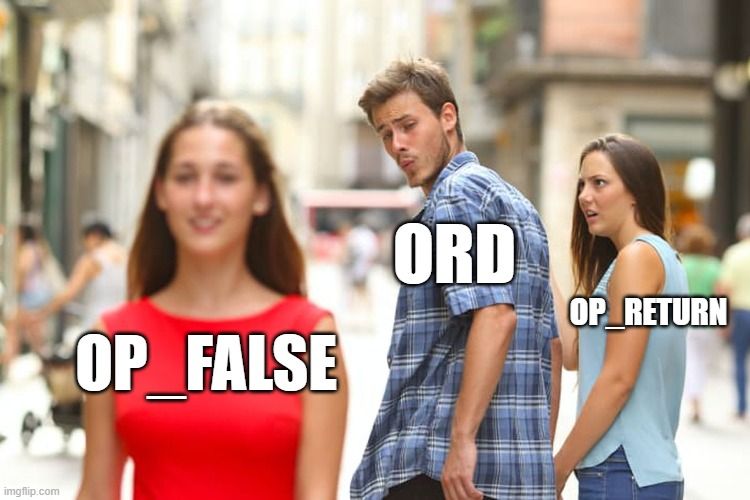
Now, pretty much no matter what happens next, and assuming some Bitcoin nodes survive well into the future – after many of the once-treasured Ethereum NFTs minted with its ERC-721 protocol have long since collapsed – their Ordinals Inscriptions will be like digital petroglyphs providing a window into the cultural id of 2023.
Future anthropologists will puzzle at the abundance of Pepes, punks, pixelated apes and the occasional penis and fart sound. Then they will review the history of the early 21st century and mutter: “Yep, that tracks.” Rodarmor has likened inscriptions to Lescaux cave paintings, signets of culture able to endure long past our ability to interpret them – if we ever could.
Whether that's cause for comfort or alarm will depend on what people put there.
Despite the blowback lots of people seem excited by the chance to mint Bitcoin NFTs. Demand has spiked and some weird, wild, sarcastic but mostly tame activity has ensued. It's been pretty cool to see so far.
The silliness is fine with Rodarmor. “A lot of things that people do with Bitcoin are already very frivolous,” he told Stephan Livera on his podcast. “A lot of Bitcoin’s transaction volume – let’s face it, it’s shitcoin-ery… you know, random exchange activity.”
Like it or hate it, a disruptive change has come to Bitcoin and many of the locals are not happy.
Is it more than a hypocritical NIMBY backlash? Just as Marc Andreessen champions affordable housing right up until the point he loudly rails against just such a proposed development in his own neighborhood, are Bitcoin purists revealing they believe in the sanctity of a permission-less network only up until the Punks come to their pristine, graffiti-free blocks? Or did someone really just ruin the neighborhood?
"I love how they call it an 'attack',” says Dfinity director of engineering John Plevyak, who seeks to remind us all of the creed that brought everyone to crypto in the first place: “Code is law motherfucker." – Eric Mack and Evan Hansen
Compress
The FBI have a Bored Ape now
Twitter cracks the case.
That was quick
Apple pulls the newly released Damus decentralized social networking app in China after just two days.

In search of ChatGPT
Microsoft may soon incorporate the chat bot into Bing search.
Google strikes back
Search giant invests $300 million in an AI startup from former OpenAI staff.
When Craigslist won't do
Couch used in photo of viral Doge meme up for charity auction.
Clicking on links is a lot of work
Hover over a link, get AI article summaries.
Don't mess with Coffeezilla
Crypto sleuth tricks MMA fighter into promoting scam NFT project
"French resistance must not and will not be extinguished"
Le Monde newspaper uses AI to recreate lost Charles DeGaulle speech
Disrupt


Thanks for reading! Please take just 30 seconds to tell us what you love or hate about this issue.

